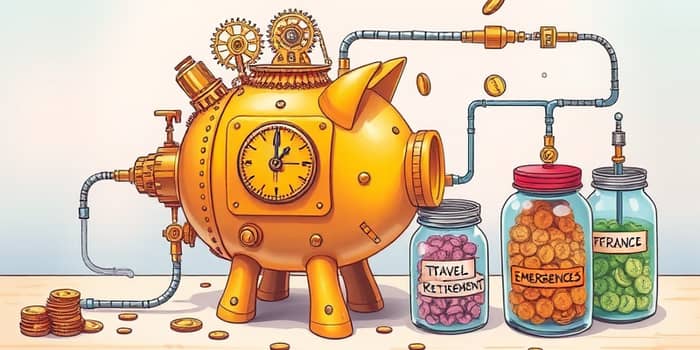
In today’s fast-paced world, juggling expenses, bills, and financial goals can feel overwhelming. Yet, building a robust savings habit doesn’t have to require constant vigilance. By embracing the set it and forget it approach, you can transform saving money from a chore into a seamless part of your routine. This method involves establishing recurring, automatic transfers from your checking account to dedicated savings or investment accounts. Over time, these contributions accumulate, creating a safety net and fueling future dreams—without any manual effort.
Financial discipline often hinges on willpower. Left to our own devices, we may prioritize immediate wants over long-term needs. Automating your savings removes the ongoing decision-making process, turning saving into a non-negotiable expense rather than an optional activity. Once set up, the transfers occur before you have a chance to spend the money, minimizing temptation and ensuring consistency.
Surveys reveal that just 22% of Americans feel comfortable with their current savings. Automation bridges this gap, helping you develop a steady saving habit and reinforcing your commitment to long-term financial health.
Getting started is easier than you might think. Most banks and credit unions offer online or mobile platforms where you can schedule automated transfers:
If your employer supports it, consider having a portion of your direct deposit routed straight into a savings vehicle. For freelancers and gig workers with variable income, explore apps that save a percentage of each payment or round up purchases to the nearest dollar, depositing spare change directly into savings.
One of the most motivating aspects of automated savings is assigning purpose to each dollar. By creating separate “buckets” or sub-accounts for specific goals—emergency fund, vacation, home down payment, or retirement—you can track progress visually and stay inspired.
Name each account clearly (e.g., “Dream Vacation 2026”) to reinforce your focus. Prioritize goals based on urgency and importance. For example, building a three- to six-month emergency fund might take precedence over discretionary travel savings. Review and adjust your contributions monthly to accommodate life changes or new ambitions.
Automated savings aligns perfectly with the “pay yourself first” principle, ensuring that saving is the first item on your budget. By automating investments—401(k), IRA, or brokerage account contributions—you can avoid emotional investing and market timing, leading to more stable, long-term results.
Consider low-maintenance portfolios with automatic rebalancing features. This approach keeps your asset allocation on track without constant oversight, allowing you to benefit from market growth while maintaining a disciplined investment strategy.
Today’s financial landscape offers a plethora of tools designed to simplify automation:
By leveraging these technologies, you can set up a savings ecosystem that runs like clockwork, requiring little to no ongoing attention.
Keep in mind that checking accounts typically earn minimal interest. To maximize returns, funnel your automated transfers into higher-yield savings or investment accounts. And remember, automation doesn’t mean “set and never revisit.” Periodic check-ins ensure your system remains optimized for your evolving life situation.
Automating your savings is more than a financial tactic—it’s a transformative habit that cultivates security, freedom, and peace of mind. With a few clicks, you can create a frictionless system that propels you toward your dreams. Whether you’re building an emergency fund, planning for retirement, or saving for a special trip, the set-it-and-forget-it approach ensures your goals remain on track, even when life gets busy.
Start today by assessing your budget, selecting realistic transfer amounts, and activating automation tools. In time, you’ll look back and marvel at how effortlessly your savings grew, turning small, consistent actions into significant financial milestones. Let go of stress and savor the confidence that comes from knowing your future is protected—one automated transfer at a time.
References













